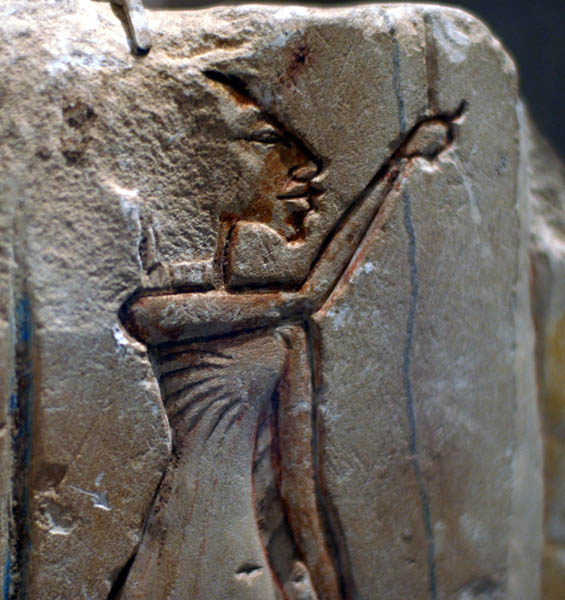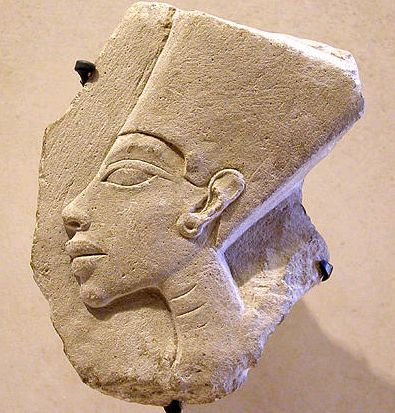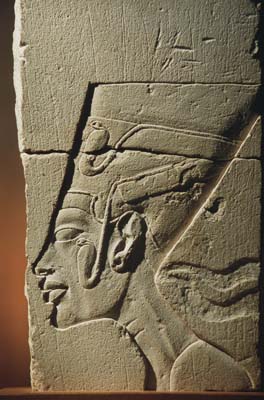Who Was Nefertiti?
How does one of the most powerful, stunningly beautiful and controversial queens of ancient Egypt virtually vanish from history?With the help of her enemies, apparently. And if there's one thing Egyptologists agree on when it comes to Nefertiti, it's that she had plenty of enemies.
The wife of Pharaoh Akhenaten and perhaps a ruler in her own right after his death, Nefertiti was little more than a historical whisper when, in 1912, an exquisite limestone sculpture of her now famous face was unearthed at the royal retreat of Amarna. It was more than 3,200 years old, dating from 1345 B.C.
But from the moment it went on display at the Egyptian Museum in Berlin in 1924, the enigmatic bust with the swan like neck assumed a place as one of the world's most famous icons.
Little was known about the woman whose beauty it celebrated. And while Nefertiti's origins as well as her demise remain shrouded in mystery, Egyptologists are beginning to piece together more about her life.
We know what we know about Nefertiti mainly from the tomb scenes and inscriptions of the officials who served at the Amarna court; from the Aten temple scenes at Karnak, which have been studied since the 1960s; and from ongoing excavations at Amarna itself currently by the British Egypt Exploration Society.
Her name, meaning "The Beautiful (or Perfect) woman has come," prompts some scholars to think that Nefertiti traveled to Egypt from a foreign land. Others theorize she was an Egyptian royal by birth. Still others think it unlikely that she was of royal blood, but that her Father was a High Government Official, a man named Kheperkheprure Ay, who went on to become Pharaoh after Tutankhamen (and, incidentally, may have had a hand in the boy king's death!).
Essentially nothing is known about Nefertiti before she became Co-Regent of Egypt with Her Husband, Pharaoh Akhenaten, who ruled from 1352 B.C. to 1336 B.C.
It's clear she had an unusually high status during Her Husband's turbulent reign. The couple's renegade practice of monotheism they worshipped the sun disc god over all others, and seem to have outlawed their subjects' polytheistic devotion, threatened Egypt's priesthood and ensured they would have no shortage of powerful enemies.
Some Egyptologists think it was Nefertiti who actually instigated this new religion and catalyzed a rift between the royals and the priests.
She bore Akhenaten six daughters, two of whom may have died in a plague. Nefertiti was the Stepmother of Tutankhamen. [King Tut married Ankhesenamon his half sister]. Some Egyptian scholars theorize that around year twelve of Akhenaten's reign Nefertiti may well have become his Co-Regent, and immediately after His death became a Pharaoh in Her own right, ruling alone for a short time.
As Akhenaten disposed of the plethora of old gods, enraging His priests and subjects, He likely needed a strong Female Figure to soften the abstract austerity of the sun deity, according to British archeologist Joyce Tyldesley, who wrote a biography of Nefertiti. It's little wonder why His Beautiful Queen was celebrated in official art and inscriptions that focused on the idyllic domestic life of the Royal Family.
However, Nefertiti's husband cherished her beyond the demands of propriety or political necessity, postulates Tyldesley. Nefertiti was an elusive subject for Tyldesley because, she says, "meager shreds of evidence" can support a variety of interpretations about the Sun Queen.
By Maryalice Yakutchik
Discovery Channel
~ NEFERTITI ~
Relief of Nefertiti housed at the Brooklyn Museum

This Website is Dedicated to
"THE MOTHER" AND "THE WAY" OF "THE MOTHER."

~ NEFERTITI ~
A small fragment of relief from the Amarna period. Housed at the Louvre Museum

~ NEFERTITI ~
Cairo Museum. This piece was discovered during excavations in the Great Temple of the Aten at Amarna.
The headdress identifies her with Tefnut.
COSMIC COMMUNITY FOR CONSCIOUS COSMIC CITIZENSHIP
Cosmic Community For Conscious Cosmic Citizenship
Conscious Cosmic Citizenship
Where The People Have Lost Their Purpose - Part 1
Part 2
Part 3
Care Is The Supreme Art
A Feeling of Belonging
Womanhood Is Humanhood And More
Daughter of Aswan
Decree For Afrika
Afrika House
Definition
The Illusion
All Is Lessons
Wanderers
2011
Heru
(More Articles)
Conscious Cosmic Citizenship
Where The People Have Lost Their Purpose - Part 1
Part 2
Part 3
Care Is The Supreme Art
A Feeling of Belonging
Womanhood Is Humanhood And More
Daughter of Aswan
Decree For Afrika
Afrika House
THE LAW OF ONE
AnkhenatonDefinition
The Illusion
All Is Lessons
Wanderers
2011
MISCELLANEOUS
The AnkhHeru
(More Articles)